Eggsplainer
Eggs: How did the kitchen staple become a luxury item overnight? It’s not one thing, say farmers, but three. Here’s a breakdown of the chicken trifecta.
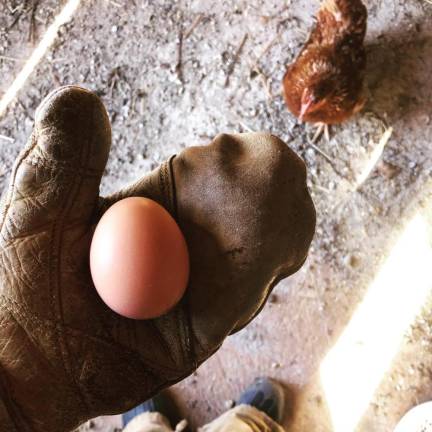
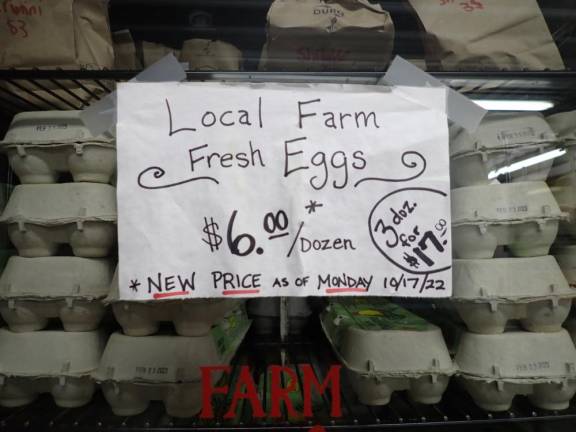
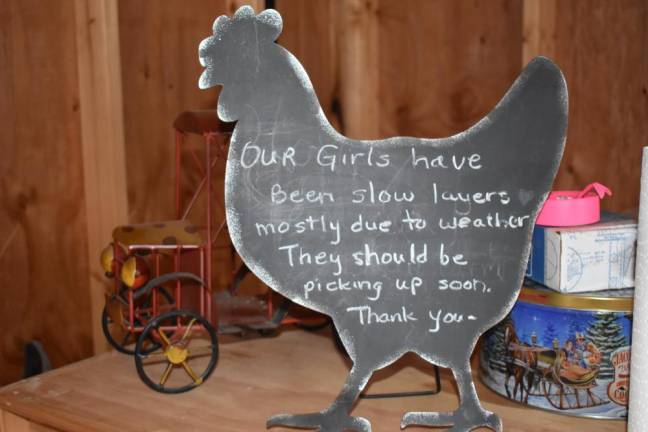
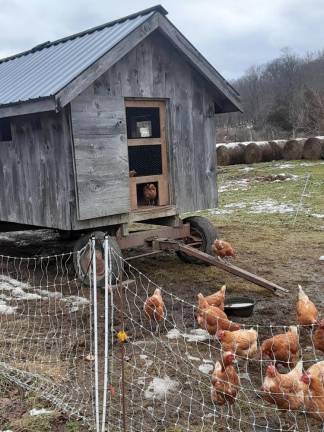
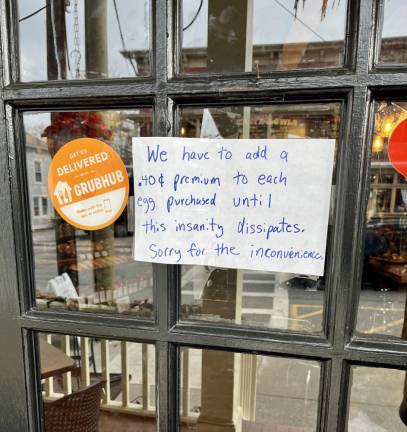
They cost more than twice as much at the store as they did last year. Local farmers have waiting lists and customer limits, and thousands of people have gotten busted trying to bring them over the border from Mexico. What’s going on with eggs?
It’s not one thing – it’s three: bird flu, winter slowdown and the price of feed.
Avian influenza
Avian influenza, a highly contagious virus that can spread through wild birds, is decimating commercial poultry operations nationwide, causing the price of eggs to surge.
This is the worst bout of bird flu on record, affecting more than 58 million birds nationwide since the outbreak began last February, according to the CDC.
The virus can take poultry farms out of commission for months, from culling sick birds to disinfecting buildings to getting a new flock up to peak laying. Bird flu has been reported in 47 states, including New York, New Jersey and Pennsylvania – but not in our area. As of Jan. 25, there were no known cases in Orange County, N.Y.; Sussex and Passaic counties, N.J.; or Pike County, Pa.
“The avian flu has nothing do with my problem – except that the grocery store doesn’t have eggs, so people who aren’t my normal customers are coming to me,” said Jack Hillery, who with his wife, Peg, sells eggs from their Warwick Indoor Farm Market in Pine Island, N.Y., on Sundays.
If you want eggs, you better get to the market early, he said.
For the first time in a long time, the Hillerys had no eggs left to sell wholesale to Pennings Farm Market in late January.
“This is the first week I didn’t give ‘em any eggs,” said Hillery.
It’s the time of year
It’s winter, and chickens – like all birds – prefer to have their babies in spring, so hens lay off egg production in the darker months.
Unlike industrial layers kept in climate-controlled sheds, backyard flocks are finely attuned to the seasons. They don’t stop laying altogether, but they slow way down as daylight wanes, with the lowest production coming just before the winter solstice.
As the days get longer, hens naturally start to lay more. It’s no coincidence that the egg is the symbol of spring celebrations, from Easter to Passover.
Artificial lighting can boost production, but only to a degree.
“You can kind of force ‘em by putting lights on,” said Bill Beck, who’s been keeping chickens on High Breeze Farm in Highland Lakes, N.J., for 42 years.
These days, he’s getting about a dozen eggs a day from his 20 layers; 30 more pullets, or young hens, should start laying soon.
“They need about 14 hours of daylight. I have a light in my coop that’s on a timer. It comes on at dark, gives ‘em about an extra four hours. But it’s still wintertime,” said Beck. “You want naturally raised birds, they slow down in the wintertime.”
Beck has a waiting list of diehards, with a limit of two dozen per customer. “I call ‘em, and usually they’re like, ‘I’ll be right down’,” he said. The new customers who’ve been calling in search of eggs, though, tend to lose interest at the mention of a waiting list, he said. “I tell ‘em check back in the spring.”
The price of feed
The price of feed has gone up drastically, affecting egg producers big and little alike, who must eventually pass the cost along to the consumer. Three years ago, a 50-pound bag of feed was $9 from Cochecton Mills in Sullivan County, said Hillery, and now it’s $14.50.
“What’s making feed prices go up is the drought. Even the honey wasn’t as good this year with everything all dried up,” said Hillery.
“Fuel’s sky high, that affects the fertilizer to grow the grain. All that’s up. The grain price is legitimately up,” he added.
He can’t help but wonder, though, whether the jacked egg prices at grocery stores might be a case of price gouging.
After keeping his price steady at $5 for years, Hillery finally raised it to $5.50 a dozen.
“We hate to raise our prices,” he said. “But we’ve been getting pretty beat for a while now.”
Beck is holding his price at $5 a dozen, though he’s debating raising it. “I don’t know. I’d like to keep it at $5 if I can,” he said. “We have this idea – we throw this word ‘sustainability’ around, but it has to be sustainable for all parties: the consumer, the producer, the earth.”
Is selling eggs at $5 sustainable for him, the farmer, with the price of feed so high?
“That’s something I’m wrestling with at this point. I don’t know that it really is,” he said. “I’m hoping the price of feed will come down a little bit and I can keep it at $5.”




